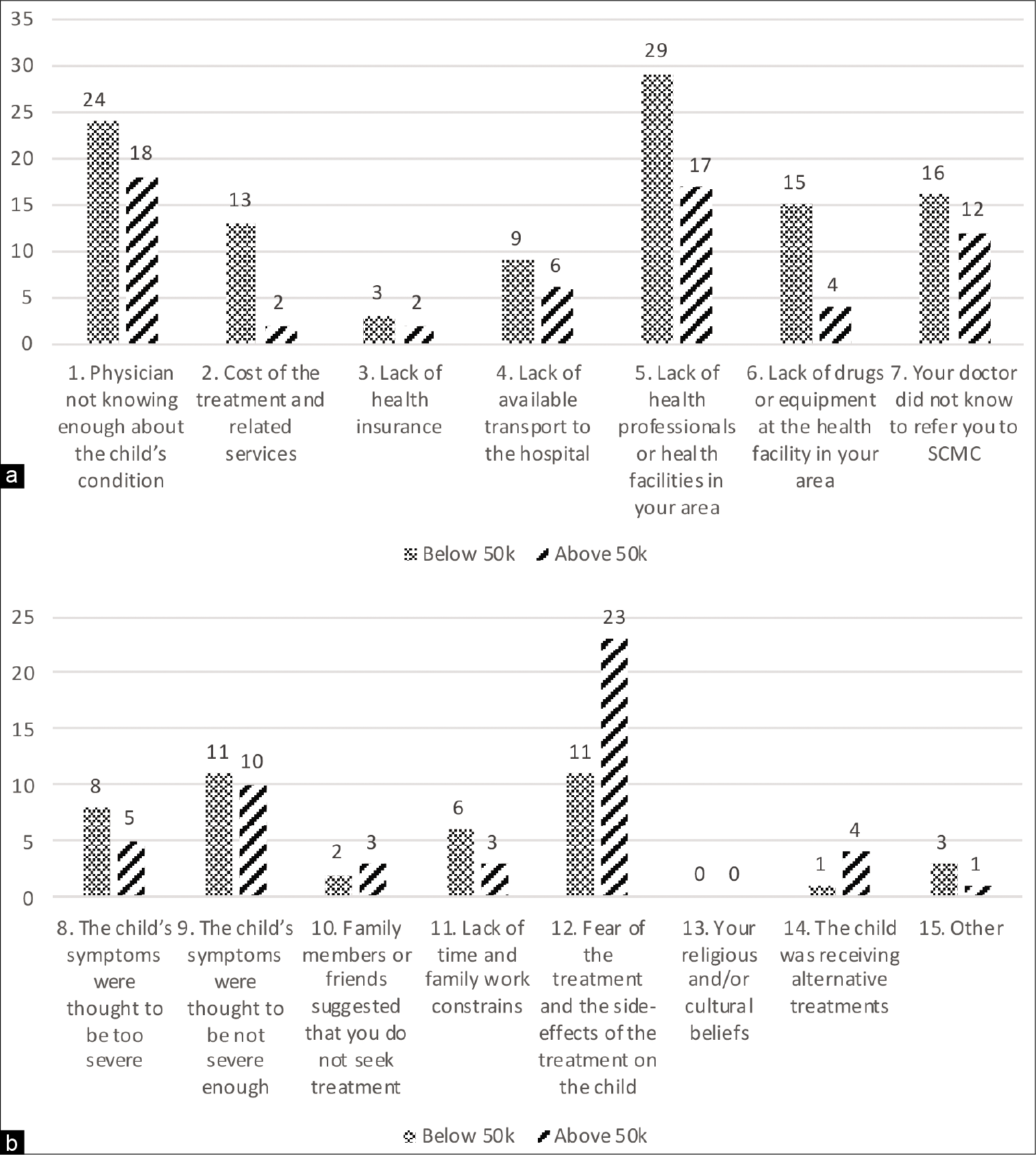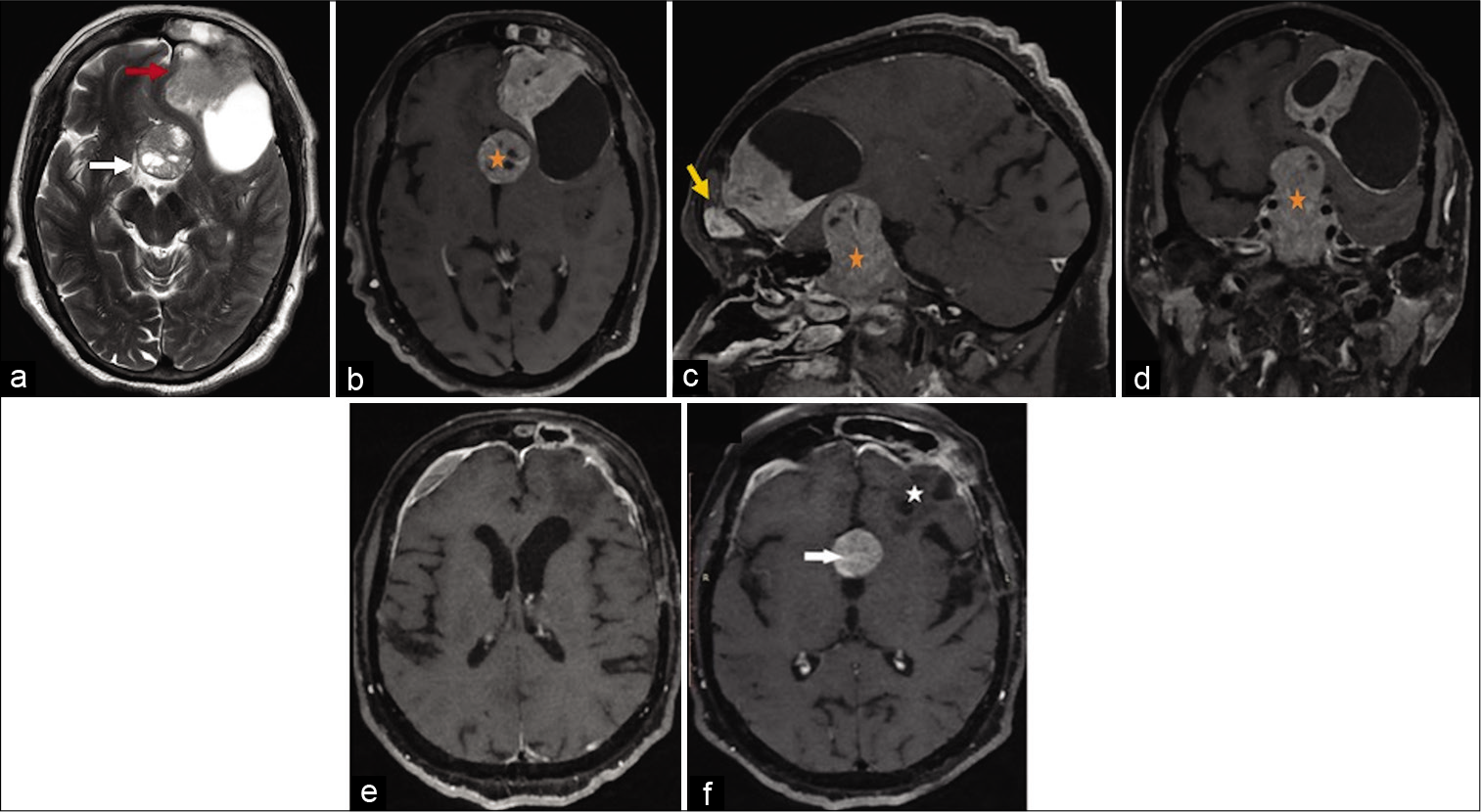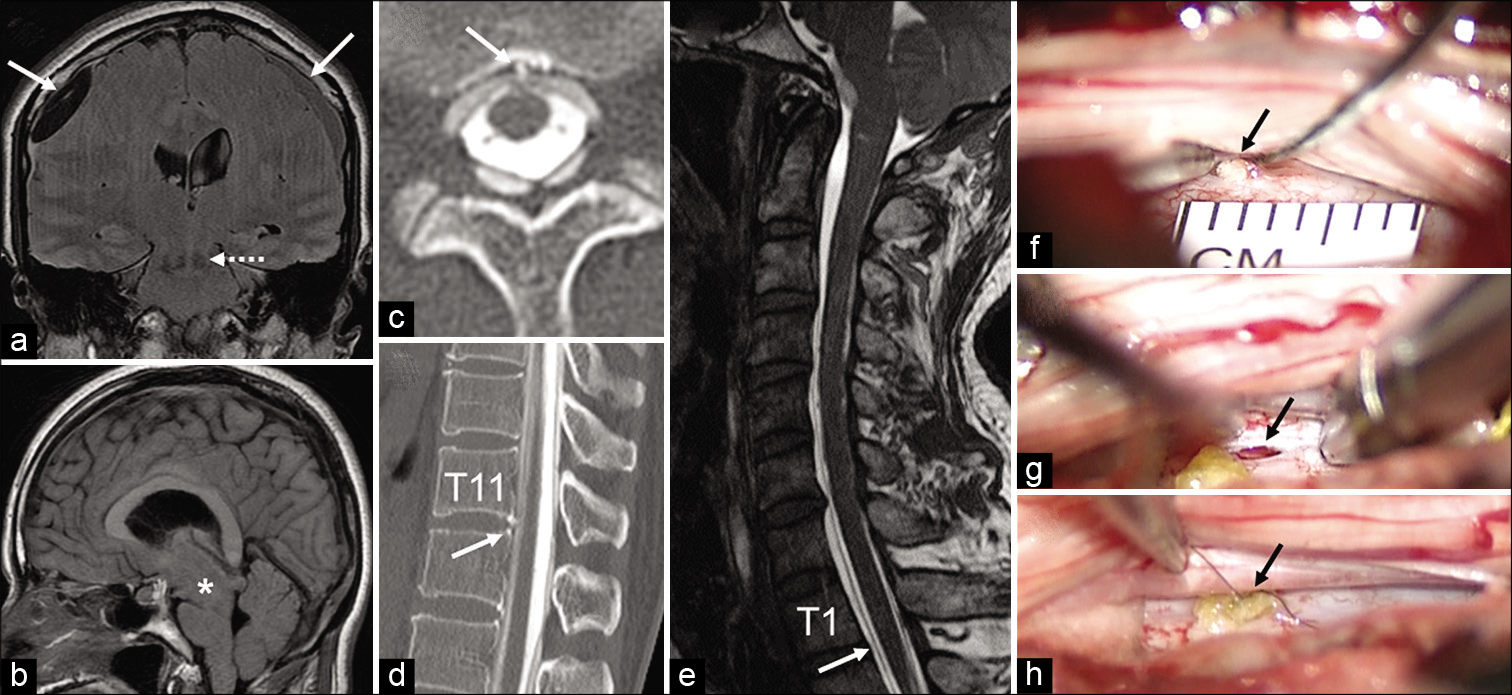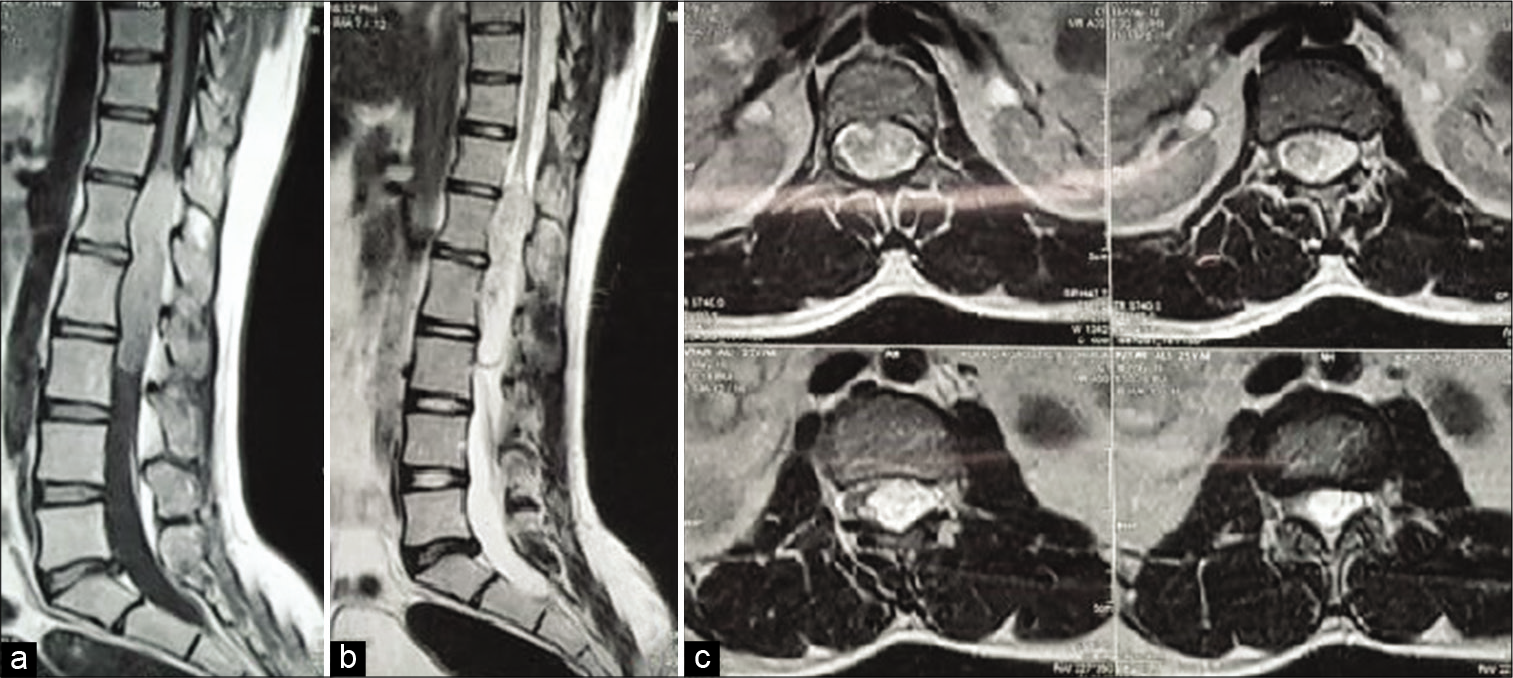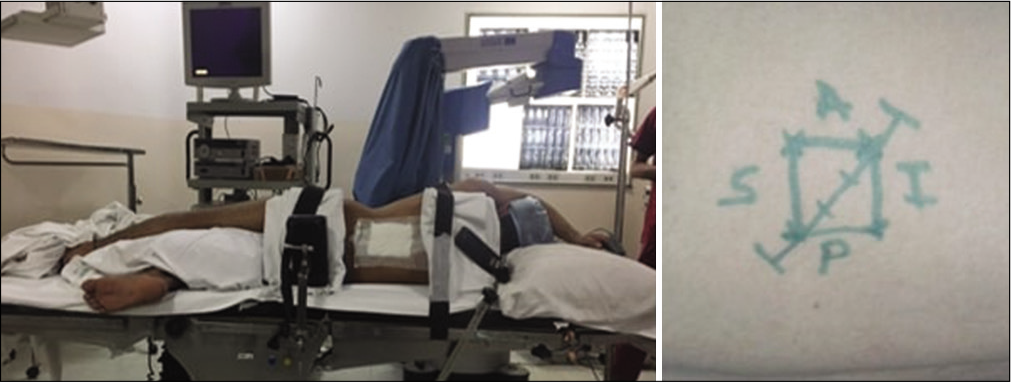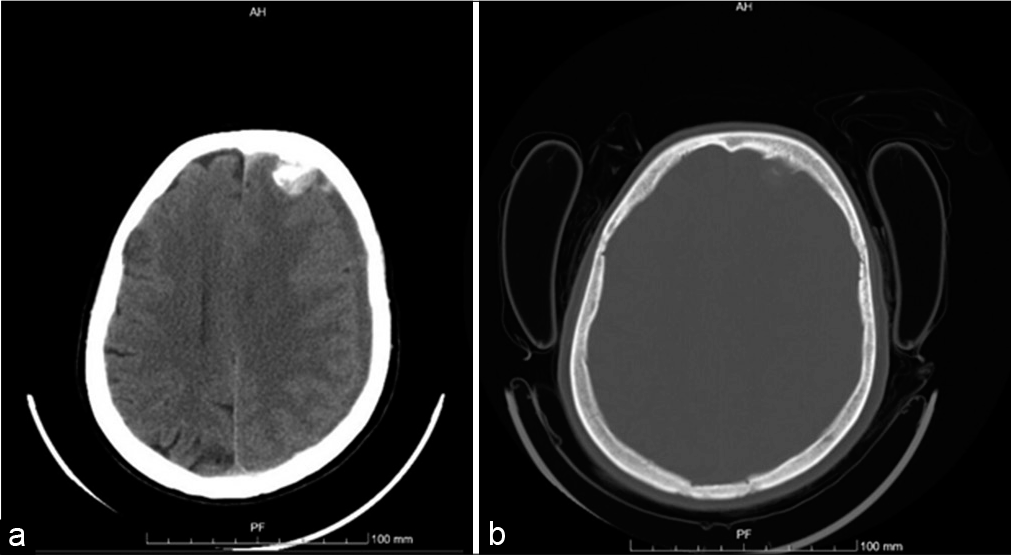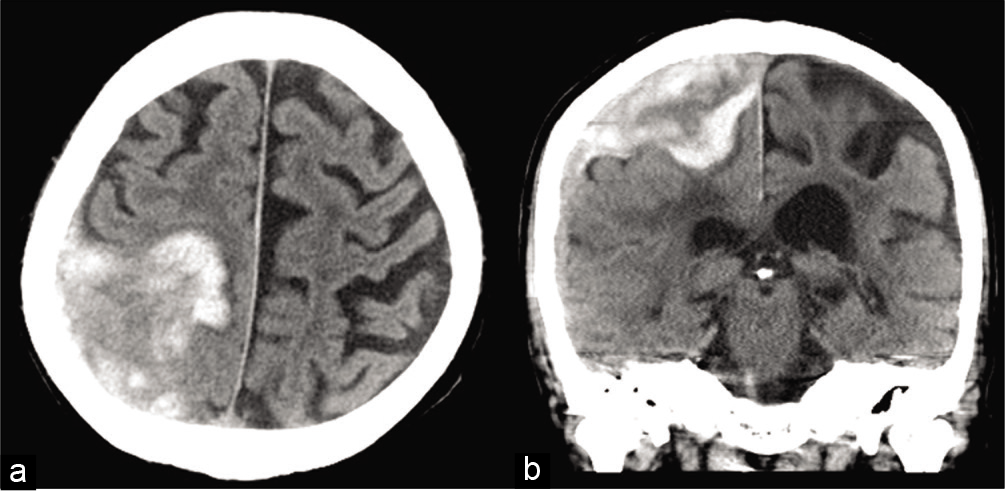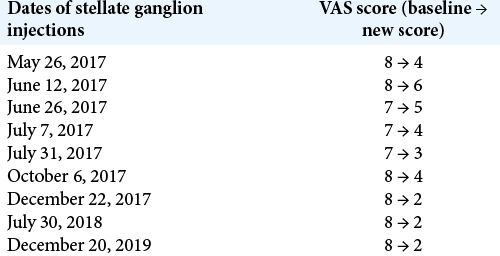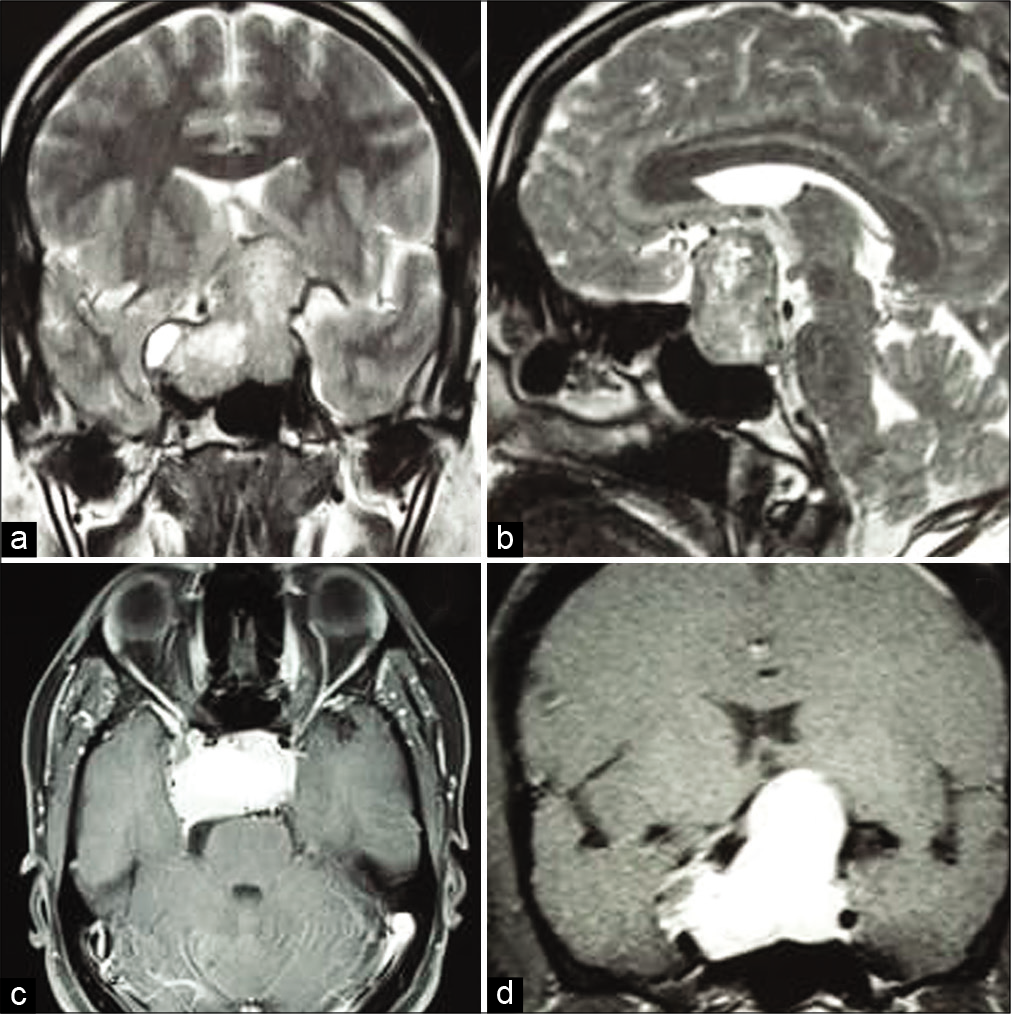Effects of parental level of income and visual presentation of spina bifida occulta in decision making process
Date of publication: 05-Sep-2020
Background: Parents are active participants in the referral process of children with non-life-threatening surgical pathologies. Nonetheless, there is scarce literature about the influence of parent’s level of income and perception of their children’s conditions on their decision process. Our study aims at expanding our knowledge about this parameter. We focused our research on parents of children spina bifida occulta (SBO), a condition that with a broad clinical impact and that often requires timely referral.
Coexistent pituitary adenoma and frontal convexity meningioma with frontal sinus invasion: A rare association
Date of publication: 05-Sep-2020
Abstract
The coexistence of pituitary adenoma (PA) and meningioma in the same patient is rare, after excluding radiotherapy-induced meningiomas. Most of the literature on their coexistence describes meningiomas located in the close vicinity to PA, that is, in the sellar/parasellar region. We describe a case of a 65-year-old lady with a nonfunctioning PA and an associated frontal convexity meningioma with frontal sinus invasion. The imaging was nonspecific for the meningioma, and its association with concomitant PA has not been reported before.
Ventriculoperitoneal shunt complications in an adult population: A comparison of various shunt designs to prevent overdrainage
Date of publication: 05-Sep-2020
Background: Overdrainage after cerebrospinal fluid diversion remains a significant morbidity. The hydrostatic, gravitational force in the upright position can aggravate this. Siphon control (SC) mechanisms, as well as programmable and flow regulating devices, were developed to counteract this. However, limited studies have evaluated their safety and efficacy. In this study, direct comparisons of the complication rates between siphon control (SC) and non-SC (NSC), fixed versus programmable, and flow- versus pressure regulating valves are undertaken.
The algorithm for diagnosis and management of intracranial hypotension with coma: Report of two cases
Date of publication: 29-Aug-2020
Background: Spontaneous intracranial hypotension (SIH) is caused by spontaneous cerebrospinal fluid (CSF) leaks that can be treated in most cases with an epidural blood patch (EBP). However, some patients, who develop severe brain sagging, can neurologically deteriorate, and in occasional instances, which become comatose. Here, with the presentation of two cases, and a review of the literature, we have set guidelines for diagnosing SIH along with recommendations for its management.
Intramedullary mature teratoma of spinal cord: A rare tumor with review of literature
Date of publication: 29-Aug-2020
Background: Spinal teratomas are rare in adults. The clinical findings are nonspecific, reflecting only in the intramedullary location of these lesions. The potential differential diagnosis for intramedullary spinal teratomas include schwannomas, dermoids, epidermoids, and neurofibromas.
Mini-open thoracoscopic-assisted spinal thoracotomy for traumatic injuries: A technical note
Date of publication: 29-Aug-2020
Background: Mini-open thoracoscopic-assisted thoracotomy (MOTA) has been introduced to mitigate disadvantages of conventional open anterior or conventional posterior only thoracoscopic procedures. Here, we evaluated the results of utilizing the MOTA technique to perform anterior decompression/fusion for 22 traumatic thoracic fractures.
Meningioma-related subacute subdural hematoma: A case report
Date of publication: 29-Aug-2020
Background: Meningiomas are the most frequent benign head tumors, although spontaneous hemorrhage is a rare form of presentation of such lesions. Of all possible bleeding locations associated with them, the subdural space is one of the most uncommon, with very few cases reported worldwide.
A convexity meningioma presenting with an acute subdural hematoma
Date of publication: 29-Aug-2020
Background: Meningiomas presenting with acute subdural hematomas are extremely rare. To the best of our knowledge, only 45 cases have been reported to date. We report on a case of a meningioma mimicking an acute subdural hematoma as well as a thorough literature review.
Management of CRPS secondary to preganglionic C8 nerve root avulsion: A case report and literature review
Date of publication: 29-Aug-2020
Background: Cervical nerve root avulsion is a well-documented result of high-velocity motor vehicle accidents (MVAs). In up to 21% of cases, preganglionic cervical root avulsion can result in a complex regional pain syndrome (CRPS) impacting the quality of life for patients already impaired by motor, sensory, and autonomic dysfunction. The optimal treatment strategies include repeated stellate ganglion blocks (SBGs).
Rare neurohypophyseal tumor presenting as giant pituitary macroadenoma with cavernous sinus invasion – A case report and review of literature
Date of publication: 29-Aug-2020
Background: Granular cell tumors (GCTs) of the pituitary are rare tumors of posterior pituitary that can present as giant pituitary macroadenoma due to the slow indolent growth of the tumor. We are reporting this case due to the rarity of GCT and usually these tumors are confined to the suprasellar region since they are arising from the pituitary stalk. GCTs that attain such giant size with cavernous sinus invasion are still rarer.


